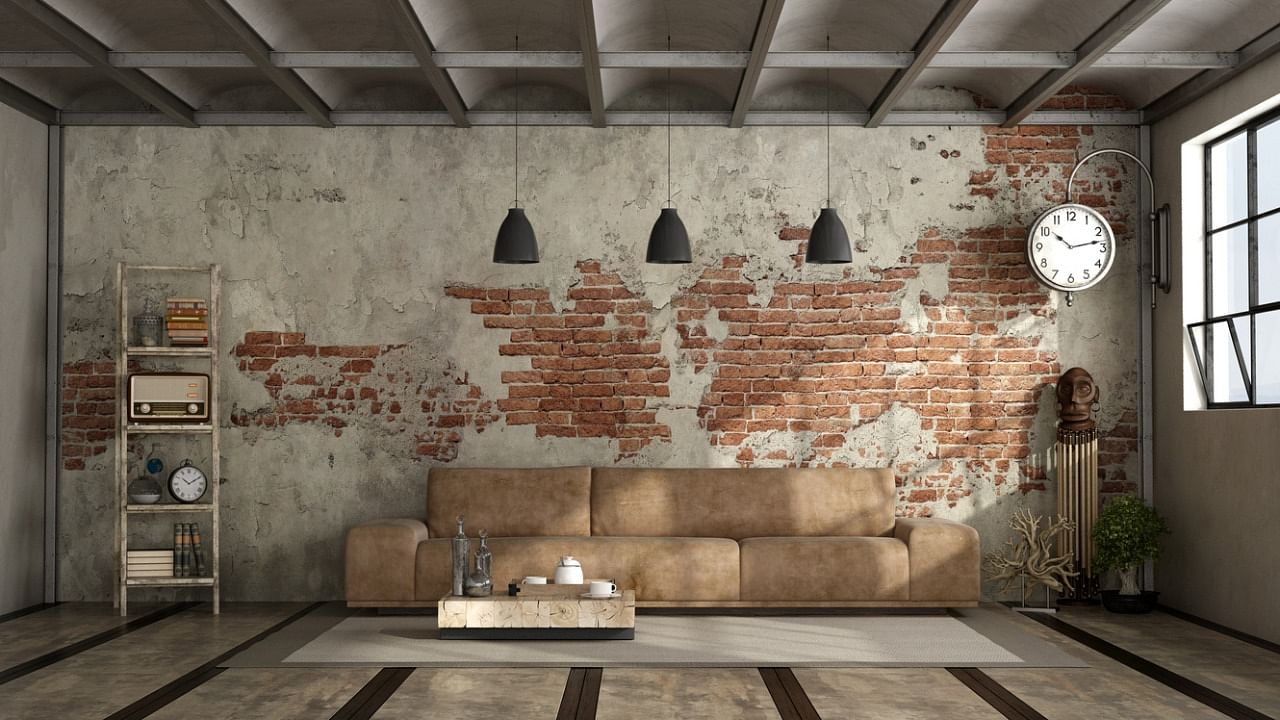
The interior design style imbibing 20th-century industrial-age aesthetics, steered by the industrial revolution and its effect on mass production, has recently been revived. The fuss-free look with few frills and embellishments is becoming popular worldwide.
Though it was historically driven by practicality and the repurposing of old warehouses and defunct factories into lofty artist's studios and airy, high-ceilinged residential spaces, this movement has been well-adapted to a popular "industrial chic" sensibility in modern homes today.
Spaces styled with this approach are characterised by purpose-driven features: utilitarian design elements, large open plan rooms and surfaces devoid of any ornamentation.
Here are a few ways to make the most of this minimalist design aesthetic in your home.
Exposed ducting and masonry
A pared-down look can be achieved by leaving the interiors unfinished and rough around the edges. Unplastered brickwork is an excellent technique that can help make the walls the hero of the space. To add to an honest and bare look, concrete ceilings, ducting and wooden floors can be left unconcealed to give the home a raw and rugged vibe typical of a 60s Manhattan-style loft.
Ample light and minimalist furnishings
Large windows framed in metal are a key characteristic of industrial interior design. The bright and airy ambience of the room emphasises spaciousness and sketches a picture of easy living. Minimal yet efficient furnishings fit well in such a picture. The functional building elements are often highlighted in the design scheme. Since the objective is not to attain highly finished details, one can play around and make bold statements using the material's inherent imperfections while crafting an overall low-maintenance space.
Focus on the materials
Industrial materials like glass, wood, metal, concrete and leather are used in this decor style. Understated furniture pieces, especially salvaged finds or those crafted from reclaimed timber, ceiling-hung fireplaces in metal, sofas clad in leather or coffee tables fashioned from concrete, go a long way in recreating an industrial look.
The metal used in structural pieces or as restrained ornamentation is in an unpolished, matte or rustic finish. Metal is often combined with wood to create interesting pieces of furniture with clean lines. Glass is also used abundantly in industrial-style interiors. A versatile material, concrete can be poured to build many objects— a larger part of the architectural scheme, a useful piece of furniture or a small accessory sitting on the top of the mantel.
Introduce bold pops of colour
Playing around with the materials, textures, and colours can help create a dynamic visual contrast within a space. White or neutral walls, with shades of metal, can easily complement the warm tones of wood. Spartan elements are interspersed with pops of bold colours and textures, like the upholstery of a sofa or an abstract artwork on the wall.
(Meeta B. Talwar, Head of Retail and Styling, Mangrove Collective, an award-winning design-and-build workshop that develops bespoke furniture, millwork, and accessories for contemporary living)